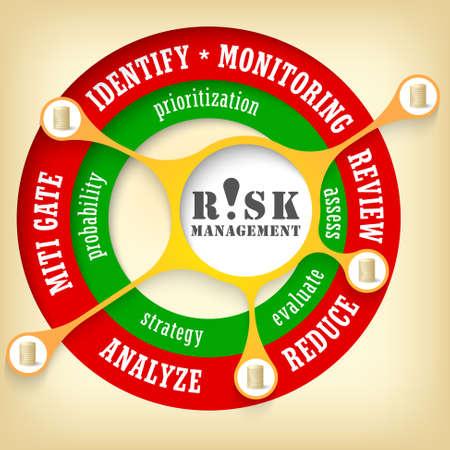Introduction to Venture Capital
Venture capital (VC) plays a crucial role in funding innovative startups and high-growth companies. Unlike traditional investments, VC involves backing early-stage businesses with high potential but also significant risk. Investors who engage in venture capital understand that while the rewards can be substantial, they must also navigate uncertainties and challenges unique to this asset class.
What Is Venture Capital?
Venture capital is a form of private equity where investors provide funding to startups and small businesses that show strong growth potential. These investments are typically made in exchange for equity or ownership stakes in the company.
How Venture Capital Fits Into the Startup Ecosystem
Startups often require significant financial resources before they become profitable. Traditional bank loans may not be an option due to lack of collateral or steady revenue. This is where venture capitalists step in, offering funding along with strategic guidance and industry connections.
(1) Stages of Venture Capital Investment
| Stage | Description |
|---|---|
| Seed Stage | Initial funding for product development and market research. |
| Early Stage | Investment to help scale operations and expand market presence. |
| Growth Stage | Larger funding rounds to accelerate expansion and revenue growth. |
| Late Stage | Funding before an IPO or acquisition, preparing for liquidity events. |
(2) Key Players in Venture Capital
The VC ecosystem includes various stakeholders who contribute to startup success:
- Venture Capital Firms: Organizations that manage investment funds and allocate capital to promising startups.
- Angel Investors: High-net-worth individuals who provide early-stage funding, often before institutional investors get involved.
- Limited Partners (LPs): Investors who contribute money to VC funds but do not actively manage investments.
- Startup Founders: Entrepreneurs seeking funding to grow their businesses.
Why Investors Are Drawn to Venture Capital
The appeal of venture capital lies in its potential for high returns. While many startups fail, those that succeed can generate massive profits for early investors. Here are some key reasons why investors choose this asset class:
(1) High Growth Potential
Startups backed by VC often operate in emerging industries with exponential growth opportunities, such as technology, biotech, and fintech.
(2) Portfolio Diversification
A well-balanced investment portfolio includes a mix of asset classes. Venture capital offers exposure to high-risk, high-reward opportunities that differ from stocks and bonds.
(3) Influence and Involvement
Unlike passive investments in public markets, venture capitalists often take an active role in shaping a companys strategy, operations, and decision-making process.
2. Understanding Risk in Venture Capital
Investing in venture capital can be highly rewarding, but it comes with significant risks. Unlike traditional investments, venture capital involves betting on early-stage startups that may or may not succeed. Understanding these risks is crucial for making informed investment decisions.
Key Risks in Venture Capital
Before diving into venture capital investments, its essential to recognize the key risk factors involved:
(1) Market Volatility
The startup ecosystem is influenced by economic trends, interest rates, and investor sentiment. Market downturns can make it harder for startups to secure funding, potentially stalling growth or leading to failure.
(2) High Startup Failure Rates
Many startups fail due to competition, poor management, or lack of product-market fit. Statistically, around 70-90% of startups do not survive beyond their early stages.
(3) Illiquidity
Venture capital investments are long-term commitments. Unlike publicly traded stocks, you cannot easily sell your stake in a startup. Investors often need to wait years before an exit opportunity, such as an acquisition or IPO, arises.
Comparison of Risk Factors
| Risk Factor | Description | Impact on Investment |
|---|---|---|
| Market Volatility | Economic conditions affect startup funding and valuations. | Can lead to lower valuations and difficulty raising capital. |
| Startup Failure Rates | A high percentage of startups fail within the first few years. | Loss of principal investment if a startup shuts down. |
| Illiquidity | Investments are locked in for extended periods. | Difficult to cash out before an exit event occurs. |
How Investors Can Mitigate These Risks
While risk is inherent in venture capital, investors can take steps to manage exposure:
(1) Diversification
Investing in multiple startups across different industries reduces the impact of any single failure.
(2) Due Diligence
Thoroughly researching a startup’s team, market potential, and financials can help identify stronger investment opportunities.
(3) Long-Term Perspective
Understanding that venture capital requires patience allows investors to ride out market fluctuations and maximize potential returns over time.
Risk Management Strategies vs. Expected Benefits
| Strategy | How It Helps | Expected Benefit |
|---|---|---|
| Diversification | Spreads risk across multiple investments. | Increases chances of hitting a successful startup. |
| Due Diligence | Helps select more promising startups. | Lowers probability of investing in failing ventures. |
| Long-Term Perspective | Avoids panic-selling during downturns. | Maximizes potential ROI through patient investing. |
By understanding the risks involved and implementing effective strategies, investors can navigate the challenges of venture capital while positioning themselves for potential high rewards.

3. Assessing Potential Rewards
Investing in venture capital offers significant upside potential, but understanding the rewards is essential for making informed decisions. Here, we explore the key benefits that attract investors to this high-risk, high-reward asset class.
High Return Potential
One of the primary reasons investors look to venture capital is the opportunity for substantial financial returns. Unlike traditional investments, which may yield steady but modest growth, venture capital has the potential to generate exponential gains if a startup succeeds. While not every investment will be a unicorn, those that do succeed can provide outsized returns.
Comparing Venture Capital Returns
| Investment Type | Average Annual Return |
|---|---|
| Public Stocks (S&P 500) | ~7-10% |
| Bonds | ~3-5% |
| Venture Capital | ~20-30% (or higher for top-performing funds) |
Portfolio Diversification
Diversification is a fundamental principle of smart investing, and venture capital provides an excellent opportunity to spread risk across different industries and innovative startups. By adding venture investments to a portfolio, investors can balance market fluctuations and potentially enhance overall returns.
(1) Reducing Correlation with Traditional Assets
The performance of venture-backed startups does not always follow public market trends, offering protection against economic downturns that impact stocks and bonds.
(2) Exposure to High-Growth Industries
Venture capital allows investors to participate in emerging sectors such as artificial intelligence, biotech, and fintech before they become mainstream.
Early-Stage Equity Advantages
Investing in early-stage startups means acquiring equity at lower valuations. This provides a unique advantage, as successful companies often experience rapid valuation growth over time.
(1) Access to Future Market Leaders
The next big tech giant or industry disruptor often starts as a small venture-backed company. Early investors benefit from getting in before mass adoption drives up valuations.
(2) Potential for Strategic Influence
Sophisticated venture investors may have opportunities to provide strategic guidance, participate in decision-making processes, and shape the direction of their investments.
4. Strategies for Managing Risk
Venture capital investing comes with inherent risks, but experienced investors use proven strategies to mitigate potential downsides. By applying these methods, investors can improve their chances of achieving favorable outcomes while minimizing losses.
Diversification
Diversification is one of the most effective ways to manage risk in venture capital. By spreading investments across multiple startups, industries, and stages of growth, investors reduce their exposure to any single companys failure.
Key Benefits of Diversification
- Reduces the impact of a single investment loss
- Increases the chances of backing successful startups
- Balances portfolio performance over time
(1) Industry Diversification
Investing in different sectors (e.g., technology, healthcare, fintech) ensures that downturns in one industry do not significantly impact the entire portfolio.
(2) Stage Diversification
Allocating funds to early-stage, growth-stage, and late-stage startups helps balance high-risk, high-reward opportunities with more stable investments.
Due Diligence
Thorough research and analysis are essential before committing capital to any venture. Due diligence involves evaluating a startup’s financials, market potential, leadership team, and competitive landscape.
Key Components of Due Diligence
| Component | Description |
|---|---|
| Financial Analysis | Review revenue models, cash flow, and burn rate. |
| Market Research | Assess industry trends and demand for the product/service. |
| Team Evaluation | Analyze founders experience and track record. |
| Competitive Landscape | Identify key competitors and potential market share. |
Investing Alongside Experienced VCs
Partnering with seasoned venture capitalists provides access to expertise, insights, and deal flow that individual investors may lack. These professionals have experience navigating risks and identifying high-potential startups.
Advantages of Co-Investing with Experienced VCs
- Leverages expert knowledge in evaluating startups
- Enhances access to better investment opportunities
- Improves risk assessment through shared due diligence
- Provides mentorship and strategic guidance for portfolio companies
(1) Syndicate Investments
Syndicates allow multiple investors to pool resources into a single deal, reducing individual exposure while benefiting from shared expertise.
(2) Follow-on Investments
Observing where experienced VCs reinvest can provide signals about a startup’s long-term potential.
By implementing these risk management strategies—diversification, due diligence, and co-investing with seasoned professionals—venture capital investors can navigate uncertainties more effectively while increasing their chances of success.
5. The Role of Due Diligence and Market Trends
When investing in venture capital, conducting thorough due diligence and staying informed about market trends are critical to making informed decisions. Investors who carefully research startups, evaluate industry shifts, and assess leadership teams can improve their chances of success while minimizing risks.
How Due Diligence Impacts Investment Decisions
Due diligence is the process of thoroughly examining a startup before committing capital. This involves assessing various factors that could influence the companys growth potential and risk level.
(1) Financial Review
Investors should analyze the startups financial statements, revenue projections, and funding history to determine its financial stability.
(2) Business Model Evaluation
Understanding how a company plans to generate revenue and scale operations helps investors gauge its long-term viability.
(3) Competitive Landscape Analysis
A startups ability to differentiate itself from competitors plays a key role in its success. Investors should assess market positioning and barriers to entry.
The Importance of Understanding Market Trends
Market trends influence the success of venture investments. Recognizing emerging opportunities and potential challenges allows investors to make strategic decisions.
(1) Industry Growth Potential
Investing in sectors with strong growth prospects increases the likelihood of high returns. Monitoring technological advancements and consumer behavior is essential.
(2) Regulatory Environment
Laws and regulations impact various industries differently. Investors must stay updated on legal changes that may affect their investments.
(3) Economic Conditions
Broader economic factors, such as inflation rates and interest rates, can impact a startups ability to raise funds or expand its operations.
Evaluating Startup Leadership
A strong leadership team is often a key indicator of a startup’s potential for success. Investors should assess the experience, vision, and adaptability of founders and executives.
| Leadership Factor | Why It Matters |
|---|---|
| Experience | A founder with industry expertise is more likely to navigate challenges effectively. |
| Vision | A clear long-term strategy ensures the company stays focused on growth objectives. |
| Adaptability | The ability to pivot in response to market changes can determine long-term survival. |
By conducting thorough due diligence, staying informed about market trends, and evaluating startup leadership teams, investors can make well-informed decisions that maximize returns while managing risks effectively.
6. Final Thoughts: Is Venture Capital Right for You?
Venture capital (VC) investing isn’t for everyone. While the potential for high returns is attractive, it comes with significant risks and long investment horizons. Before diving in, investors should evaluate their risk tolerance, financial goals, and investment strategy.
Understanding Your Risk Tolerance
VC investments are inherently risky, with a high failure rate among startups. Investors need to assess their comfort level with uncertainty and potential losses.
(1) High-Risk, High-Reward Nature
Unlike traditional investments like stocks or bonds, venture capital can result in total loss or exponential gains. Investors should be financially prepared for both outcomes.
(2) Long-Term Commitment
VC investments often take years to materialize returns. If you need liquidity in the short term, this asset class may not be suitable.
Aligning VC Investment with Your Strategy
Your overall investment portfolio should dictate whether venture capital fits into your financial plan.
| Investor Type | VC Suitability |
|---|---|
| Aggressive Investor | Well-suited; comfortable with risk and long-term commitments. |
| Balanced Investor | May allocate a small percentage to diversify portfolio. |
| Conservative Investor | Poor fit; prefers stable and predictable returns. |
(1) Diversification Strategy
If you already have a well-diversified portfolio, adding VC investments can provide exposure to high-growth opportunities.
(2) Access to Deal Flow
The best VC opportunities often come through networks. Ensure you have access to quality startups before committing capital.


